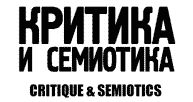LANGUAGE OF THE CONDUCTING GESTURE IN THE CONTEXT OF PEDAGOGICAL PRAXEOLOGY
DOI: 10.23951/2312-7899-2020-1-232-242
In the article, from the standpoint of system analysis the author considers some features of a fairly young conductor art in the dynamics of its genesis and development, due to the progressive evolution of musical art in general. From the standpoint of pedagogical praxeology, specific examples of outstanding performers (Arnold Katz, Evgeny Mravinsky, Herbert Von Karayan, Alexander Sveshnikov, and others) describe the professional and personal qualities that an orchestra conductor or choir should possess (especially a novice conductor), and features of the creative interaction of the leader collective and performers. Describing conduction as an object of visual perception, the author identifies the leading role of Ilya Aleksandrovich Musin in the formation of the technique of conducting art in Russia, designating the gestures of “triad” – “attention”, “breath” or “auftakt” and “attack of sound”. At the same time, determining the true nature of the art of conducting, the unity of the two main components is noted – the technical side and the expressive one. Emphasizing the primacy of the production, the technical equipment of the manual apparatus, the author updates the significance of the artistic interpretation of the conductor’s gesture, which presupposes the emotional expression of the intention, color, soul of the composer.
Keywords: conductor, conducting gesture, conducting technique, musical performance, language of artistic expressiveness.
References:
Abakshonok, A.V. (2011) Pedagogical notes on the effectiveness of classes in the conducting class. Proceedings of the St. Petersburg State Institute of Culture. 191. pp. 14–22. (In Russian).
Grigoriev, L. & Platek, Y. (1969) Modern conductors. Moscow. [Online] Available from: https://www.belcanto.ru/klemperer.html (Accessed: 18.01.2019). (In Russian).
Kalashnikova, N.V. (2009) Formation of the skills of holistic perception of the choral score for the future conductors of the master in the process of higher professional education: Abstract of the dissertation for the degree of candidate of pedagogical sciences. Ekaterinburg. (In Russian).
Kalinin, S. S. (1998) In memory of Alexander Vasilievich Sveshnikov. Articles. Memories. Moscow. (In Russian).
Kayukov, V. A. (2014) Conductor and conducting. Moscow. (In Russian).
Kazachkov, S.A. (1990) From lesson to concert. Kazan. (In Russian).
Musin, I. M. (2006) Conductor's gesture language. Moscow. (In Russian).
Smirnov, B. F. (2004) Conducting art as an artistic and sociocultural phenomenon: Abstract of a dissertation for the degree of Doctor of Arts. Chelyabinsk. (In Russian).
Soboleva, N. A. (2013) Artistic and non-verbal communication and its refraction in conductor's performance: Abstract of a dissertation for the degree of candidate of art history. St. Petersburg. (In Russian).
Tremzina, O. S. (2014) Conducting gesture as an artistic phenomenon: The dissertation for the degree of candidate of art history. Saratov.(In Russian).
Yurchenko, N. E. (2013). The formation of a culture of creative communication in the professional training of the conductor - the future leader of the musical and instrumental ensemble: Abstract of the dissertation for the degree of candidate of pedagogical sciences. Moscow. (In Russian).
Issue: 1, 2020
Series of issue: Issue 1
Rubric: ARTICLES
Pages: 232 — 242
Downloads: 653










